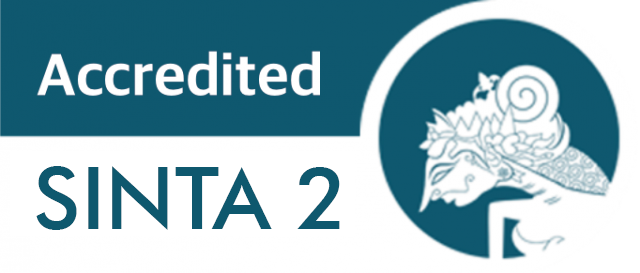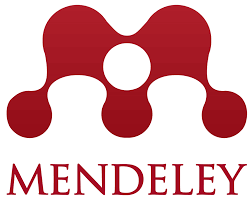Debate as A Learning-Teaching Method: A Survey of Literature
DOI:
https://doi.org/10.15408/tjems.v2i1.1665Keywords:
debate as a learning-teaching, learning-teaching method, debat sebagai belajar-mengajar, Metode belajar-mengajarAbstract
Abstract
This present paper explored historical references of debate trend to be proposed as one of learning-teaching method. By analyzing the strengths and limitations of debate, the author found that any existing debate format is imperfect and it is educators’ task to seek out how in utilizing debate as a learning teaching method. Some works on debate assessment method were described. In real implementation, on author's experience to use debate as learning-teaching method, showed that it was difficult to mark students either as individual or team. Therefore, their preparation and the performance in-class debate should be considered.
Abstrak
Artikel ini mengeksplorasi referensi sejarah dari tren debat yang akan diusulkan sebagai salah satu metode belajar mengajar. Dengan menganalisis kekuatan dan keterbatasan perdebatan, penulis menemukan bahwa format debat yang ada tidak sempurna dan itu adalah tugas pendidik untuk mencari tahu bagaimana memanfaatkan debat sebagai metode pengajaran pembelajaran. Beberapa karya pada metode penilaian debat dijelaskan. Dalam implementasi nyata, pengalaman penulis menggunakan debat sebagai metode belajar-mengajar, menunjukkan bahwa hal itu sulit untuk menandai siswa baik sebagai individu atau tim. Oleh karena itu, persiapan mereka dan perdebatan kinerja dalam kelas harus dipertimbangkan.
How to Cite: Salim, A. (2015). Debate as A Learning-Teaching Method: A Survey of Literature. TARBIYA: Journal of Education In Muslim Society, 2(1), 97-104. doi:10.15408/tjems.v2i1.1665.
Permalink/DOI:http://dx.doi.org/10.15408/tjems.v2i1.1665
References
Beck, C. (1999). Francine, kerplunk, and the golden nugget – Conducting mock trials and debates in the classroom. Social Studies, 90 (2), 78-84.
Budesheim, T., & Lundquist, A. (2000). Consider the opposite: Opening minds through in-class debates on course-related controversies. Teaching of Psychology, 26 (2), 106-110.
Busmek, P. (2009). Debate as Disease: Debate and the Dialogue and Deliberation Movement, Contemporary Argumentation and Debate 29 (1), 1-30.
Darby, M. (2007). Debate: A teaching-learning strategy for developing competence in communication and critical thinking. Journal of Dental Hygiene, 81(4), 1-10.
Ehninger, D. (1958). Debating as critical deliberation. Southern Speech Journal, 24 (1), 22‐30.
Elliot, L. (1993). Using debates to teach the psychology of women. Teaching of Psychology,
(1), 35-38.
Fisher, M., LaPointe, C., Peterson, K., & White, D. (2001). Using debate to develop empowered learning in the classroom: A prescription. Retrieved July 21, 2014, from http://debate.uvm.edu/NFL/rostrumlib/Snider%20Empow.pdf
Flick, D. (1998). From debate to dialogue: Using the understanding process to transform our conversations. Boulder, CO: Orchid Publications.
Freeley, A., & Steinberg, D. (2005). Argumentation and debate: Critical thinking for reasoned decision making (11th ed. ). Belmont, CA: Wadsworth.
Gibson, R. (2004). Using debating to teach about controversial drug issues. American Journal ofHealth Education, 35 (1), 52-53.
Glantz, S., & Gorman, B. (1997). “He said, she said” debating with technology. TechnologyConnection, 4 (7), 14-16.
Green, C., & Klug, H. (1990). Teaching critical thinking and writing through debates: Anexperimental evaluation. TeachingSociology, 18 (4), 462-471.
Hopkins, G. (2003a). Four corner debate. Retrieved July 21, 2014, from http://www.educationworld.com/a_lesson/03/lp304-04.shtml
Hopkins, G. (2003b). Stage a debate: A primer for teachers on the Lincoln-Douglas debate format. Retrieved July 21, 2014, from http://www.educationworld.com/a_lesson/03/lp304-01.shtml
Jugdev, K., Markowski, C., & Mengel, T. (2004). Using the Debate as a Teaching Tool in theOnline Classroom. Online Cl@ssroom, 1 (10), 4-6.
Keller, T., Whittaker, J., & Burke, T. (2001). Student debates in policy courses: Promoting policypractice skills and knowledge through active learning. Journal of Social Work Education, 37 (2), 343-355.
Kennedy, Ruth (2007). Tin-class debates: Fertile ground for active learning and the cultivation of critical thinking and oral communication skills. International Journal of Teaching and Learning in Higher Education, 19(2), 183-190.
Landrum, R. (1991). Student evaluation of classroom debates. College Student Journal, 25 (2), 163-165.
Melvin, K. (1988). Rating class participation: The prof/peer method. Teaching of Psychology. 15(3), 137-139.
Moeller, T. (1985). Using classroom debates in teaching Developmental Psychology. Teaching ofPsychology, 12 (4), 207-209.
Morahan-Martin, J. (1996). Should peers’ evaluations be used in class projects? Questions regarding reliability, leniency, and acceptance. Psychological Reports, 78(1), 143-150.
Musselman, E. (2004). Using structured debate to achieve autonomous student discussion. TheHistory Teacher, 37 (3), 335-348.
Roy, A., & Macchiette, B. (2005). Debating the issues: A tool for augmenting critical thinkingskills of marketing students. Journal of Marketing Education, 27 (3), 264-276.
Saskatchewan Curriculum Reference Committee.(1998). Communication studies 20 module 7: The art of debating. Retrieved July 21, 2014, from http://www.sasked.gov.sk.ca/docs/comm20/mod7.Html
Schroeder, H., & Ebert, D. (1983). Debates as a business and society teaching technique. Journalof Business Education, 58, 266-269.
Smith, R. (1990). Are peer ratings of student debates valid? Teaching of Psychology, 17 (3), 188-189.
Snider, A., & Schnurer, M. (2002). Many sides: Debate across the curriculum. New York: International Debate Education Association.
Tannen, D. (1998). The argument culture: Stopping America’s war of words. New York: Ballantine.
Temple, M. (1997). Using debate to develop health literacy. Journal of School Health, 67 (3), 116-117.
Tumposky, N. (2004). The debate debate. Clearing House, 78 (2), 52-55.
Walker, M., & Warhurst, C. (2000). “In most classes you sit around very quietly at a table and getlectured at …”: Debates, assessment, and student learning. Teaching in Higher Education, 5 (1), 33-49.











